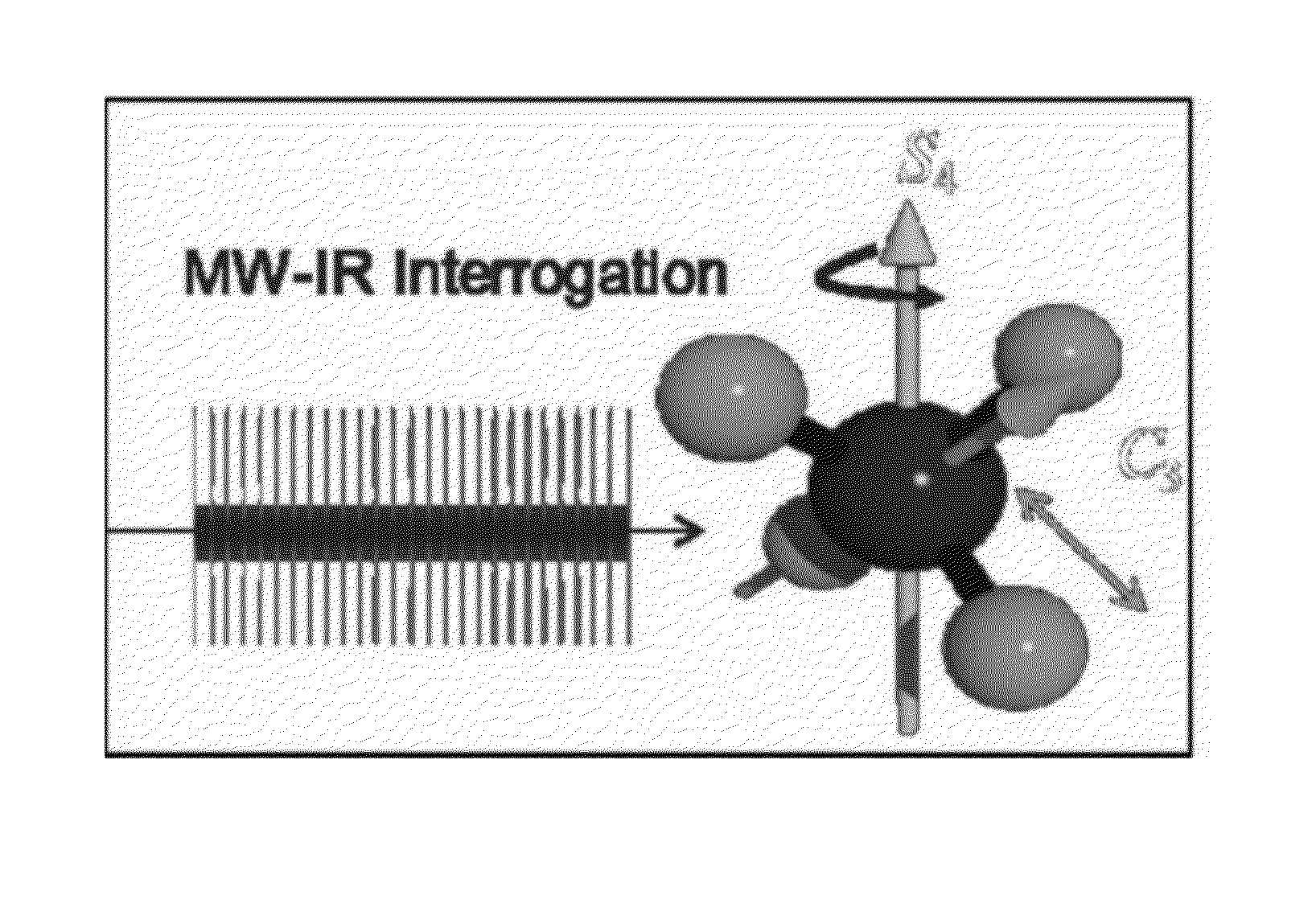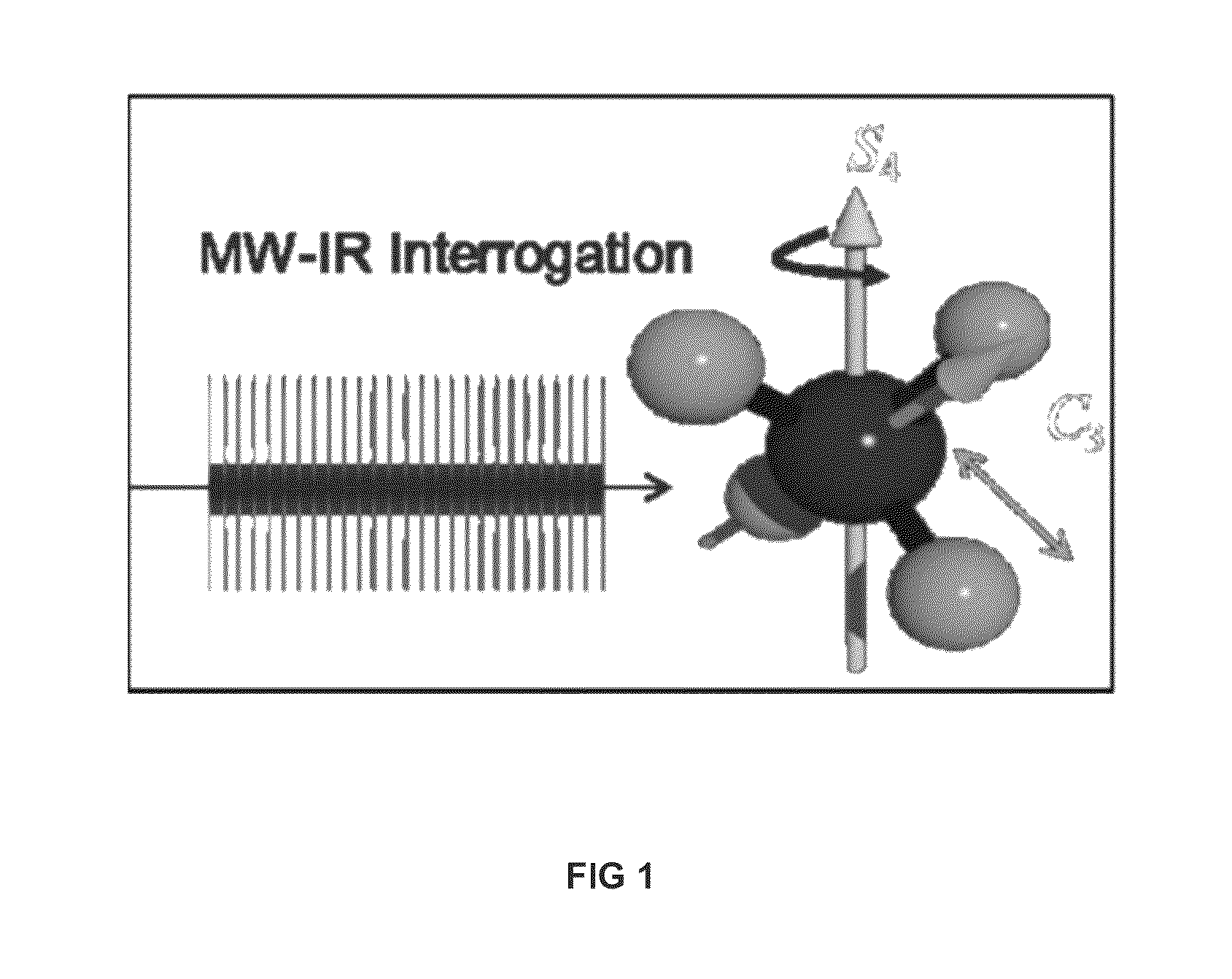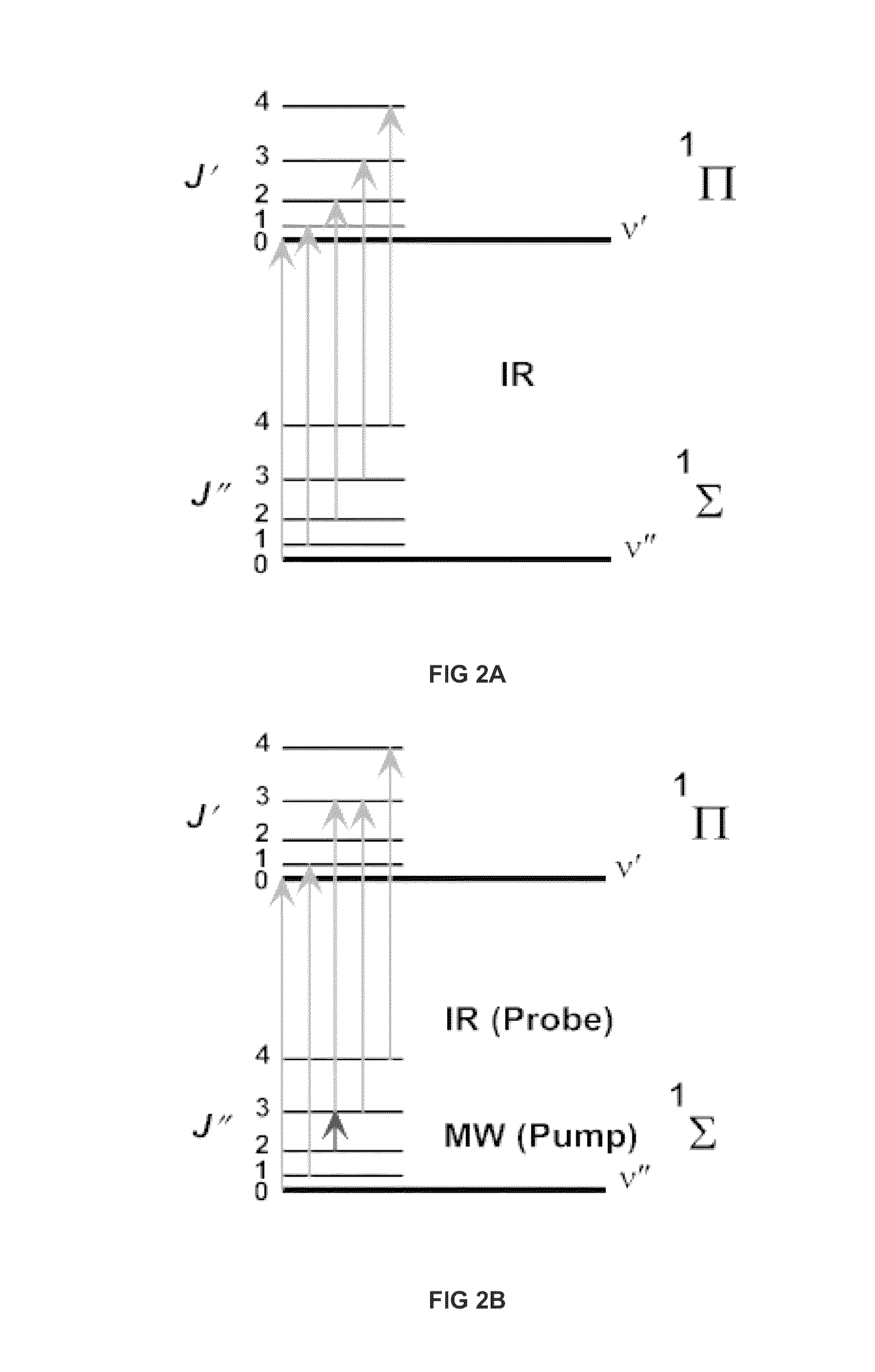Differential excitation spectroscopy
a technology of excitation spectroscopy and differential excitation spectroscopy, which is applied in the field of new spectroscopic techniques, can solve the problems of inability to easily locate and characterize individual hazards, inability to accurately detect the sensitivity of detection,
- Summary
- Abstract
- Description
- Claims
- Application Information
AI Technical Summary
Benefits of technology
Problems solved by technology
Method used
Image
Examples
Embodiment Construction
and Test Data
[0038]With this invention, we have developed a novel molecular conditioning technique which allows the density of states of a molecule to be perturbed from a normal ground state distribution through the application of a pump radiation field. The pump radiation field, subject to the normal constraints of transition probability and absorption cross-section, preferentially alters the molecular rotational and vibrational states (again, the rovibrational states) in favor of higher-order modes. This perturbation of the density of states is physically manifested by alterations to the spectrum for the material, with certain portions of the spectrum being strengthened (enhanced) or weakened (suppressed), depending on the applied perturbation. These changes in the spectrum are a sensitive indicator of the underlying molecular species rovibrational states, as a correctly applied perturbation will force the molecule into another state. This distribution of states is highly specific...
PUM
| Property | Measurement | Unit |
|---|---|---|
| microwave frequencies | aaaaa | aaaaa |
| frequency | aaaaa | aaaaa |
| frequency | aaaaa | aaaaa |
Abstract
Description
Claims
Application Information
 Login to View More
Login to View More - R&D
- Intellectual Property
- Life Sciences
- Materials
- Tech Scout
- Unparalleled Data Quality
- Higher Quality Content
- 60% Fewer Hallucinations
Browse by: Latest US Patents, China's latest patents, Technical Efficacy Thesaurus, Application Domain, Technology Topic, Popular Technical Reports.
© 2025 PatSnap. All rights reserved.Legal|Privacy policy|Modern Slavery Act Transparency Statement|Sitemap|About US| Contact US: help@patsnap.com



